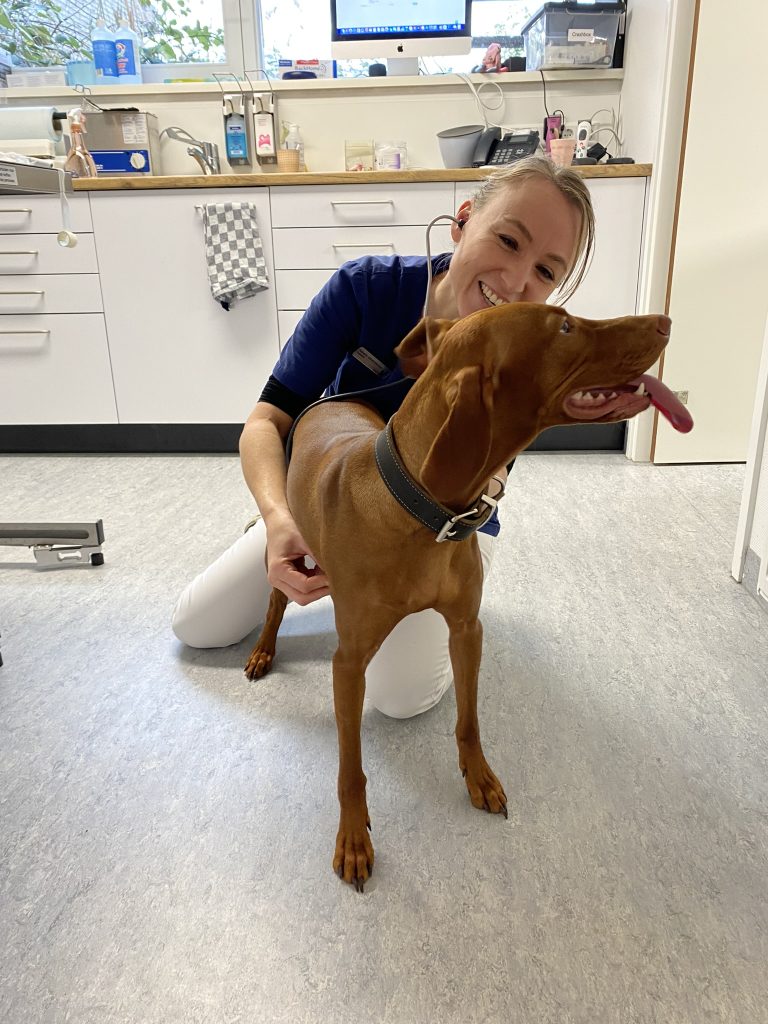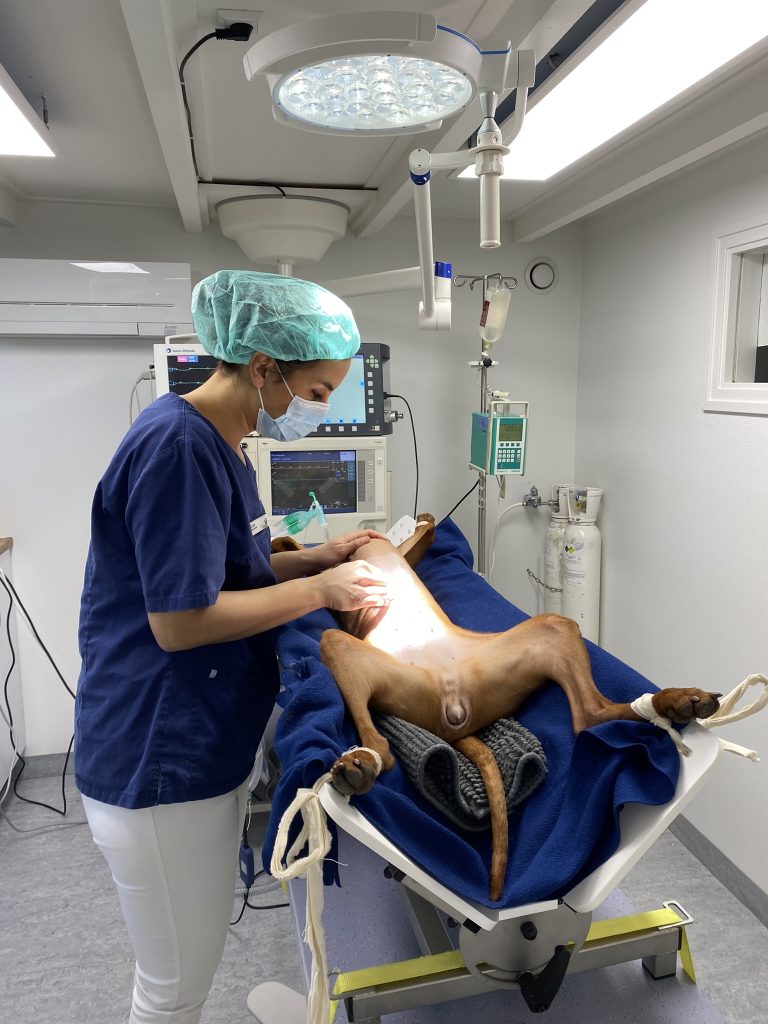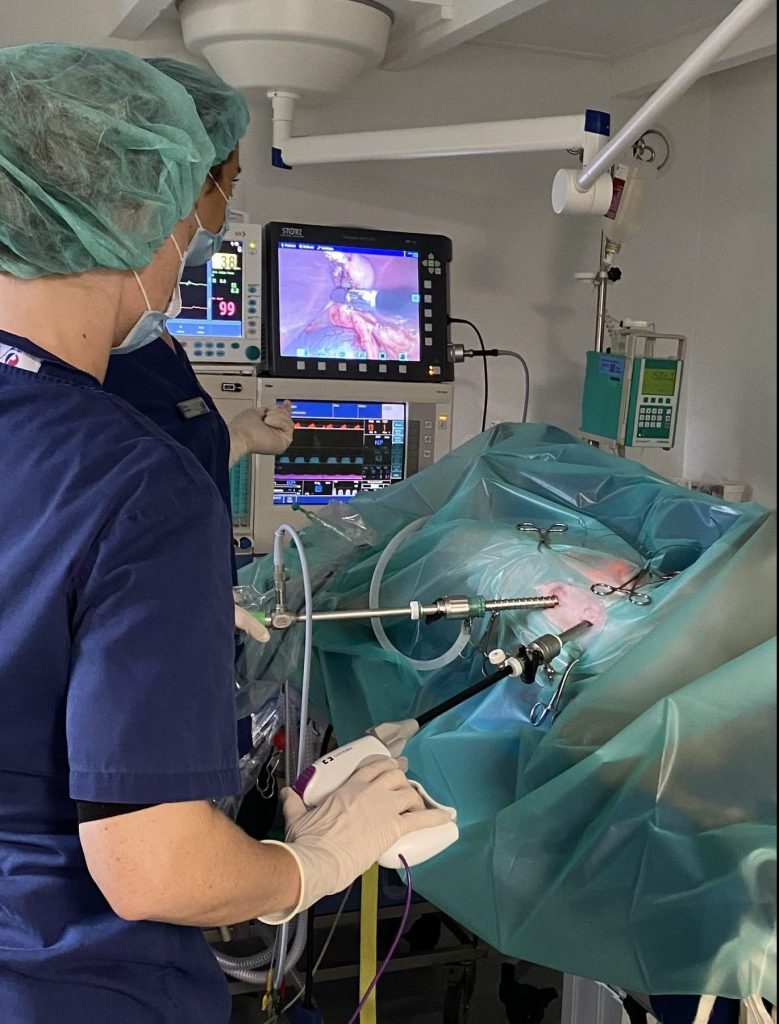“Hi all, I am Fissa, a very sweet Vizsla female of over 1.5 years old. A few months ago I was in heat for the first time, what a bizarre experience that was! My owner put pants on me, like I sometimes see on you little human beings. I didn’t like it, and kept trying to pull it off. And then she put them on again, quite a fun game actually. Anyway, to prevent me from going through this hell again, my owner was kind enough to make an appointment for me at our vet for spaying. I always love coming there, they are so sweet to me, and if I sit down well I always get a treat. By the way, it’s not just any spaying, but a laparoscopic spaying.”
What is that, a laparoscopic spaying?
“I heard the veterinarian say this to my owner, ‘We can perform spaying on a female via laparoscopy at all of our clinics.’ A laparoscopy is keyhole surgery, we go in with a small camera. In a laparoscopic spaying, instead of 1 larger incision, two small holes are made, one for the camera and one for our equipment we use to perform the procedure. These holes are very small, which makes recovery faster and less painful for your dog. The above sounded like music to my ears, so I happily wagged my tail and got another one of those tasty treats.”
To show how laparoscopic spaying works, Babette, the veterinarian, tells her story below.”
Here we go!
Prior to surgery, we give Fissa a thorough checkup. If all is well, we place a small tube in the blood vessel and put her under anesthesia. Sleep well! In order to work as neatly and sterile as possible, her belly is shaved and cleaned. Then Fissa is attached to all the monitors so we can keep a very close eye on her during the operation and she gets some nice IV fluids.



Then we will carefully make two incisions in Fissa’s abdomen. Through the first incision, the abdominal cavity is inflated using CO2. Then, through the second incision, a camera is inserted into the abdominal cavity. The veterinarian can look into the abdominal cavity through a screen and easily visualize the ovaries with the camera.
When we have the ovaries in view, we grab them tightly and burn the blood vessels to close them. Then we carefully cut off the ovaries. This will not bleed at all because we have burned the blood vessels shut. Now we can remove the ovaries through the small abdominal incision.
After the keyhole surgery, the incisions in the skin are sutured which dissolve on their own. It is not necessary to remove the stitches. When the operation is over we let Fissa wake up and she can go home soon. Since only two small incisions are made, it is (usually) not necessary to put on a shirt or collar.



The pros and cons of laparoscopic surgert
In addition to the fact that the abdominal incisions are much smaller, another major advantage of laparoscopic spaying is that much less traction is necessary on the ovaries. This makes the procedure for a large dog much less painful than traditional spaying, and much less likely to cause complications. Your dog will therefore recover from the procedure much faster.
In an occasional case, during laparoscopic spaying, we see that the uterus looks abnormal and the uterus will have to be removed. This is especially the case in older female dogs. In this case, we will have to perform spaying through the traditional way, as the uterus is too large to remove through the small incisions.
In summary, the pros and cons of laparoscopic spaying versus traditional in the larger dog are:
Pros
- The surgery is faster and therefore the anesthesia risk is lower
- Only 2 small cuts are needed, instead of one larger cut, and recovery is much faster as a result.
- The risk of infection is lower
Cons
The cost of laparoscopic spaying is higher than that of traditional spaying. These higher costs are due in part to the knowledge and equipment required.
We recommend that spaying in dogs over 10 kg always be performed laparoscopically. In dogs under 10 kg, the abdominal incision in traditional spaying is already small and the benefits of laparoscopy are negligible.
If you have any questions about laparoscopy or our other expertise, please feel free to contact us.
And by the way… Fissa is doing very well!


